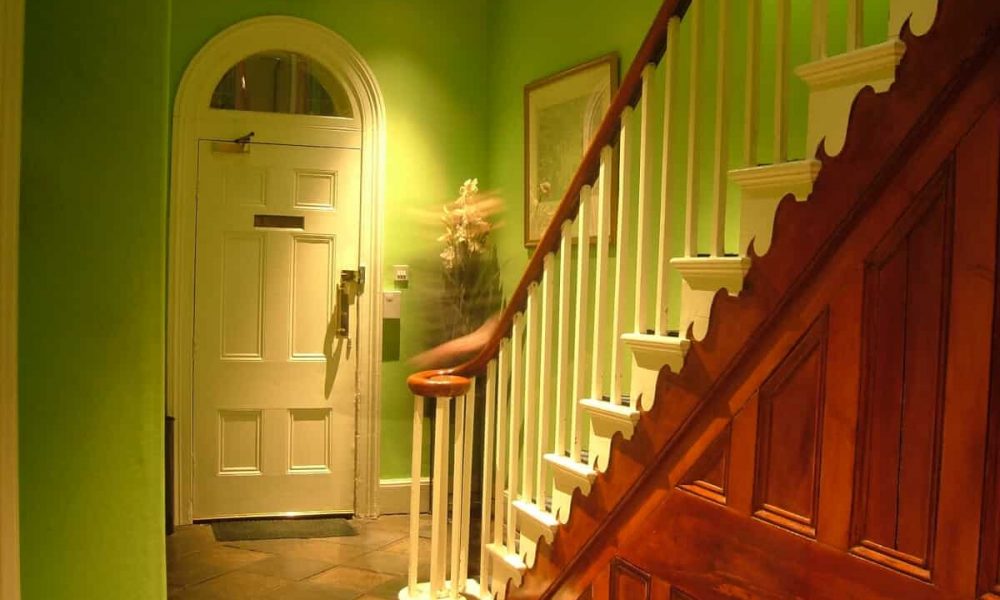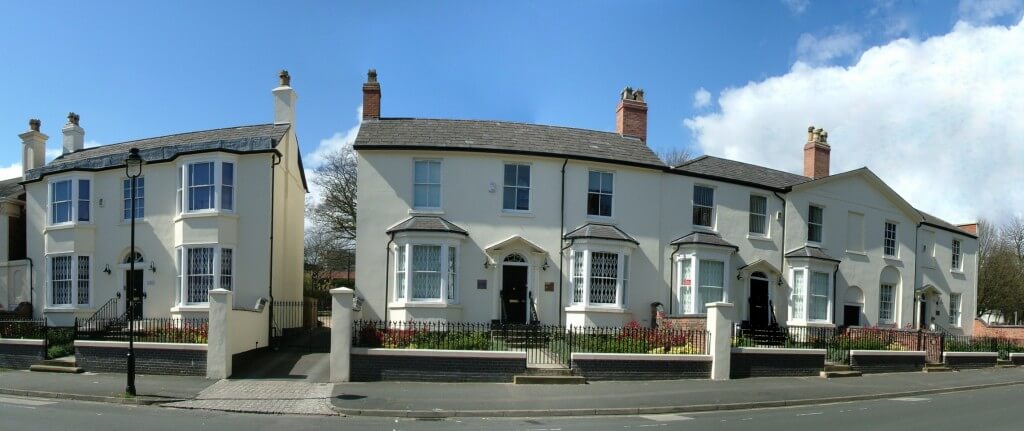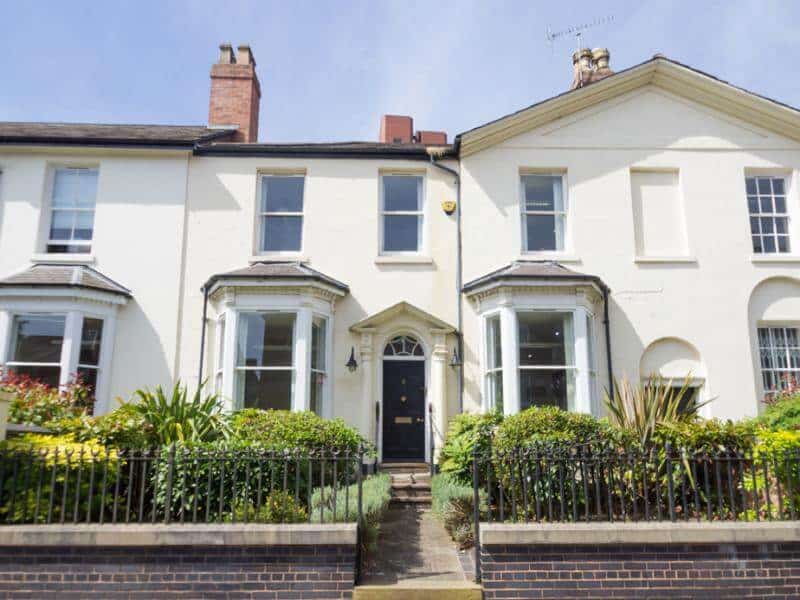Listed building office redevelopment in Edgbaston
These beautiful buildings had been quickly converted into offices in the mid-20th century, and our listed building architects restored them to their original glory.
Refurbishing Grade II buildings on Calthorpe Estates
This particular project involved a plan for office redevelopment in four Grade II listed buildings at 5-8 George Road were constructed as dwellings within the Calthorpe Estate during the early 1800’s.
All four of the buildings were in a state of disrepair with some having been unoccupied for close to forty years prior to the commencement of works.
The existing frontages on to George Road were also in a poor state and the rear gardens; apart from a car parking area was extensively overgrown and had been so for many years.

The damage to the buildings included leaking roofs, structurally unsound walls and floors and damp, whilst several thefts had robbed the structures of many original period features including the fireplaces. The worst property was in a particularly poor state with all the floors missing, leaving unstable internal walls running from the exposed cellar region to the apex of the roof.
The buildings were originally built as houses although it was believed that they were also used in part for work purposes – an early example of “live -work” units. Since the 1960’s they have been predominately used as office which is the current use.
Complex rebuilding of a Georgian terrace in Five Ways
The brief was to restore the building, internally and externally, in keeping with its Grade II listed status and to provide the basis for an office redevelopment within the building.
Although a refurbishment to the eye, much of the buildings particularly at the rear of the site had to be completely rebuilt, using the original materials where possible.

The development has been set against the enhanced street refurbishment carried out by Birmingham City Council and Calthorpe Estates since the work took place. Number 44 was a similar office redevelopment project, with the Grade II listed property located on George Road, Edgbaston and was constructed as a dwelling within the Calthorpe Estates during the early 1800’s. The structure was in a state of disrepair when works commenced to transform the building into a stylish office space .
The internal and external spaces were dramatically enhanced with a series of modern and contemporary ideas, whilst maintaining the integrity of the Grade II listed status of the building. Planning permission was also granted for a new building within the garden areas of the buildings, although the client has since decided to delay the construction of this phase.
Expert heritage renovations
This ‘L shaped’ building consists of 9 live-work apartments focusing on a mature beech tree which was lost in amongst the overgrown wilderness. The ‘L shaped’ building has been designed to be separate from the listed buildings but by its positioning creates an implied courtyard.
Because of the outlook towards tall office buildings, the main rooms of the new apartments all focus into a new square. Lesser rooms generally look outwards from the site and the mature tree planting to the rear boundaries were retained to soften the view.
Thanks to Lapworth Architect’s expert knowledge and experience in restoring and refurbishing Georgian buildings in Five Ways and Edgbaston, the offices were finished to a professional standard, and were quickly rented out to eager enterpreneurs.

If you’re looking to renovate a listed building in a conservation area, come and talk to us at Lapworth Architects. We have the expertise, architectural skill and planning experience to get your project going. Give us a call for a free consultation on 0121 455 0032.